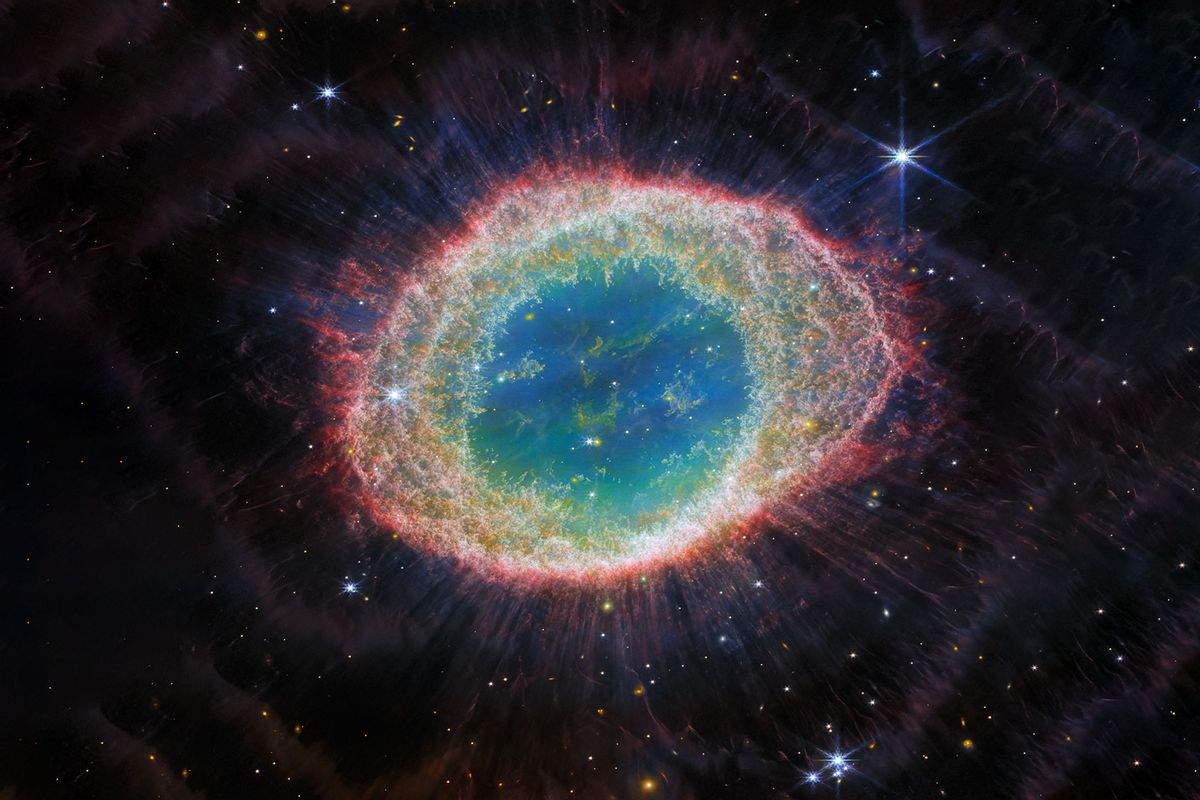Although it’s a well-known fact in astronomy, many people don’t realize that when we see the Ring Nebula — the famed celestial oculi known as M57, whose hypnotic blue iris dazzles the northern constellation of Lyra — what we’re actually seeing is the slow-motion death throes of a white dwarf star.
The catastrophic beauty of a dying star reaches its farewell crescendo when its crucible core surges with ionizing heat. The chemical light of its firework-spray nebula explodes in Technicolor spikes, wisps, rings — wild arcs that rip through the dark as the star thrashes off its atmosphere, shedding luminous clouds, as the Ring Nebula has, for thousands of years. Where once humans could only see the blurry glow of the Ring Nebula’s distant fire, the latest images from NASA’s James Webb Space Telescope have now given us a startlingly sharp map of its radiant halo and intricate inner-ring filaments, allowing us to discover for the first time what our own sun’s final hours might look like.
In a Monday release from NASA, Cardiff University’s Roger Wesson describes the Webb-enabled discovery thus: “A surprising revelation was the presence of up to ten regularly-spaced, concentric features within this faint halo. These arcs must have formed about every 280 years as the central star was shedding its outer layers. When a single star evolves into a planetary nebula, there is no process that we know of that has that kind of time period. Instead, these rings suggest that there must be a companion star in the system, orbiting about as far away from the central star as Pluto does from our Sun. As the dying star was throwing off its atmosphere, the companion star shaped the outflow and sculpted it.”
The Ring Nebula’s dense halos aren’t the Webb’s only discoveries, though. To learn more about the wonders revealed through the new telescope, feast your eyes on the latest batch of images capturing the birth of new stars, the extraordinarily detailed pictures of the famous Pillars of Creation — or even glimpse the earliest strings of the cosmic web, the filamentary structure of 10 threaded galaxies, considered a blueprint for all creation.

